Themed collection Nitrogen Ligands

Nitrogen ligands
This special web collection of Dalton Transactions focuses on nitrogen ligands, as a tribute to the 150th anniversary of the development of the periodic table.

Dalton Trans., 2019,48, 13904-13906
https://doi.org/10.1039/C9DT90195G
Nitrogen-doped metal-free carbon catalysts for (electro)chemical CO2 conversion and valorisation
This review focuses on the recent developments made in the fabrication of N-doped carbon materials for enhanced CO2 conversion and electrochemical reduction into high-value-added products.
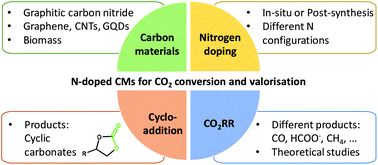
Dalton Trans., 2019,48, 13508-13528
https://doi.org/10.1039/C9DT01691K
2,2′-Dipyridylamines: more than just sister members of the bipyridine family. Applications and achievements in homogeneous catalysis and photoluminescent materials
2,2′-Dipyridylamine derivatives: Discreet members of the polydentate nitrogen ligand familly with underestimated potential.
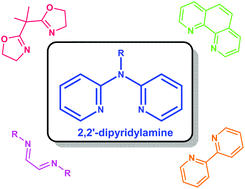
Dalton Trans., 2019,48, 11599-11622
https://doi.org/10.1039/C9DT02165E
Group 11 tris(pyrazolyl)methane complexes: structural features and catalytic applications
Tris(pyrazolyl)methane ligands (Tpmx) have been for years a step behind their highly popular boron-anionic analogues, the tris(pyrazolyl)borate ligands (Tpx).
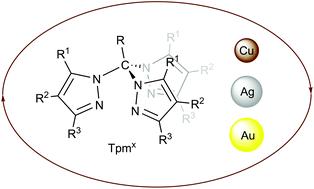
Dalton Trans., 2019,48, 10772-10781
https://doi.org/10.1039/C9DT01661A
The chemistry of guanidinate complexes of the platinum group metals
In the present Perspective article, synthetic and structural aspects, reactivity studies and applications of platinum group metal complexes containing guanidinate ligands are discussed.
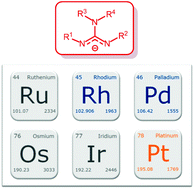
Dalton Trans., 2019,48, 9021-9036
https://doi.org/10.1039/C9DT01289C
Chelate rings of different sizes with non-innocent ligands
Redox-active unsaturated chelate ligands can be realised with different ring sizes of the resulting metallacycles.
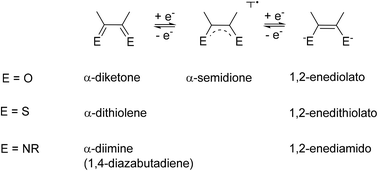
Dalton Trans., 2019,48, 8521-8529
https://doi.org/10.1039/C9DT01411J
Ethylene polymerization of nickel catalysts with α-diimine ligands: factors controlling the structure of active species and polymer properties
In the present perspective, the recent advances of α-diimine nickel based catalysts of ethylene polymerization, focusing on the relationships between catalyst structures and their catalytic properties are discussed.
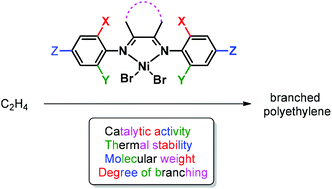
Dalton Trans., 2019,48, 7974-7984
https://doi.org/10.1039/C9DT01297D
Chemistry and applications of cyanoximes and their metal complexes
During the past three decades, considerable research effort has been dedicated to a new class of organic ligands – cyanoximes – which have the general formula NC–C(![[double bond, length as m-dash]](https://www.rsc.org/images/entities/char_e001.gif) NOH)-R, where R is an electron-withdrawing group. In total, 44 different cyanoximes were prepared and characterized thus far.
NOH)-R, where R is an electron-withdrawing group. In total, 44 different cyanoximes were prepared and characterized thus far.
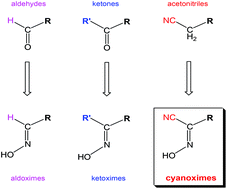
Dalton Trans., 2019,48, 7985-8013
https://doi.org/10.1039/C9DT01057B
Phosphorus dendrimers functionalised with nitrogen ligands, for catalysis and biology
Phosphorus dendrimers (dendrimers having one phosphorus atom at each branching point) possess versatile properties, depending on the type of their terminal functions.

Dalton Trans., 2019,48, 7483-7493
https://doi.org/10.1039/C9DT01305A
Heterobimetallic Ba/Li and Ca/Li amides and diphenylmethanide
Rare examples of stable heterobimetallic Ca/Li and Ba/Li amido polymeric species, as well as an ate Ca/Li diphenylmethanide compound stable in ethers, have been structurally characterised. Intra- and intermolecular metal⋯H–Si interactions are shown to play a key role.
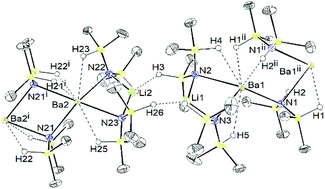
Dalton Trans., 2019,48, 5500-5504
https://doi.org/10.1039/C9DT00771G
Effect of substituents on molybdenum triiodide complexes bearing PNP-type pincer ligands toward catalytic nitrogen fixation
Molybdenum triiodide complexes bearing phenyl and ferrocenyl substituted PNP-type pincer ligands acted as more effective catalysts toward ammonia production under ambient reaction conditions.
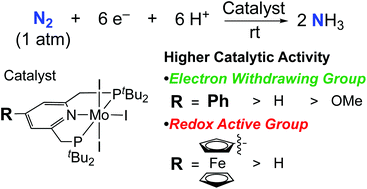
Dalton Trans., 2019,48, 3182-3186
https://doi.org/10.1039/C8DT04975K
Synthesis, characterization and catalytic activity of novel ruthenium complexes bearing NNN click based ligands
New ruthenium complexes based on click-synthesized triazole-containing NNN ligands were successfully used for the hydrogenation of aldehydes and ketones.
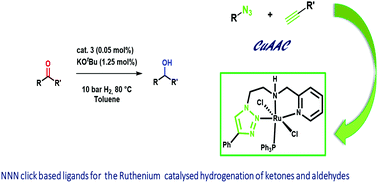
Dalton Trans., 2019,48, 13580-13588
https://doi.org/10.1039/C9DT01822K
β-Arylethynyl substituted silver corrole complexes
The introduction of β-ethynyl groups strongly influences the optical properties of silver 3,17- triarylcorrole complexes.
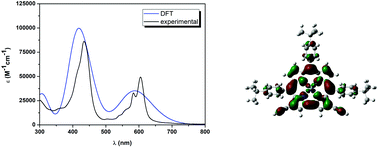
Dalton Trans., 2019,48, 13589-13598
https://doi.org/10.1039/C9DT03166A
Cu(II) complexes of N-rich aroylhydrazone: magnetism and catalytic activity towards microwave-assisted oxidation of xylenes
Three new polynuclear Cu(II) complexes derived from the new aroylhydrazone N′-(di(pyridin-2-yl)methylene)pyrazine-2-carbohydrazide (HL) have been screened towards the oxidation of xylene isomers.
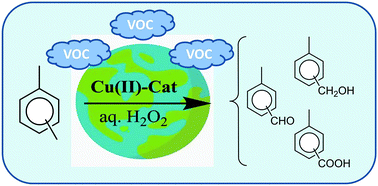
Dalton Trans., 2019,48, 12839-12849
https://doi.org/10.1039/C9DT02196E
Porous organic polymers based on cobalt corroles for carbon monoxide binding
Porous organic polymers (POPs) functionalized by cobalt corroles are designed for selective carbon monoxide capture applications.
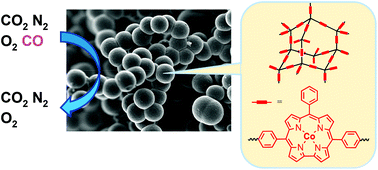
Dalton Trans., 2019,48, 11651-11662
https://doi.org/10.1039/C9DT01599J
Light-stable polypyridine silver(I) complexes of 1,3,5-triaza-7-phosphaadamantane (PTA) and 1,3,5-triaza-7-phosphaadamantane-7-sulfide (PTA![[double bond, length as m-dash]](https://www.rsc.org/images/entities/char_e001.gif) S): significant antiproliferative activity of representative examples in aqueous media
S): significant antiproliferative activity of representative examples in aqueous media
A series of novel silver polypyridine complexes containing PTA or PTA![[double bond, length as m-dash]](https://www.rsc.org/images/entities/char_e001.gif) S have been synthesized and fully characterized. Representative light-stable and water-soluble complexes were evaluated for their cytotoxic and the antitumor activity.
S have been synthesized and fully characterized. Representative light-stable and water-soluble complexes were evaluated for their cytotoxic and the antitumor activity.
![Graphical abstract: Light-stable polypyridine silver(i) complexes of 1,3,5-triaza-7-phosphaadamantane (PTA) and 1,3,5-triaza-7-phosphaadamantane-7-sulfide (PTA [[double bond, length as m-dash]] S): significant antiproliferative activity of representative examples in aqueous media](/en/Image/Get?imageInfo.ImageType=GA&imageInfo.ImageIdentifier.ManuscriptID=C9DT01646E&imageInfo.ImageIdentifier.Year=2019)
Dalton Trans., 2019,48, 11235-11249
https://doi.org/10.1039/C9DT01646E
Resolution of minor size differences in a family of heteroleptic coordination cages by trapped ion mobility ESI-MS
Trapped ion mobility mass spectrometry shows its power as analytical tool in supramolecular chemistry by discriminating ten heteroleptic coordination cage derivatives, only differing slightly in size.
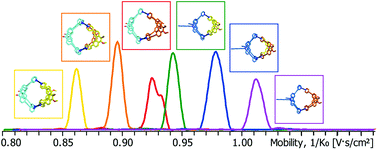
Dalton Trans., 2019,48, 11070-11075
https://doi.org/10.1039/C9DT01814J
Iron(II) complexes with diazinyl-NHC ligands: impact of π-deficiency of the azine core on photophysical properties
Boosting iron(II) complex excited-state lifetime by combining pyrazine and benzimidazolylidene NHC ligands.
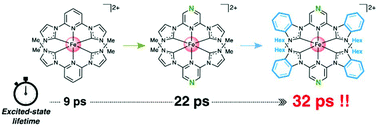
Dalton Trans., 2019,48, 10915-10926
https://doi.org/10.1039/C9DT01731C
Structural and magnetic characterization of Ni(II), Co(II), and Fe(II) binuclear complexes on a bis(pyridyl-triazolyl)alkane basis
Reactions of bis[5-(2-pyridyl)-1,2,4-triazol-3-yl]alkanes (alkane spacers –(CH2)n–: n = 2 in L2, n = 3 in L3, −n = 4 in L4) with Ni, Co, Fe salts resulted in the preparation of five series of mononuclear and binuclear complexes.
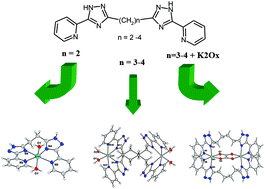
Dalton Trans., 2019,48, 10526-10536
https://doi.org/10.1039/C9DT01391A
Copper(II)-mediated base pairing involving the artificial nucleobase 3H-imidazo[4,5-f]quinolin-5-ol
A highly stabilizing Cu(II)-mediated base pair is introduced into DNA using a large artificial nucleobase.
![Graphical abstract: Copper(ii)-mediated base pairing involving the artificial nucleobase 3H-imidazo[4,5-f]quinolin-5-ol](/en/Image/Get?imageInfo.ImageType=GA&imageInfo.ImageIdentifier.ManuscriptID=C9DT02043H&imageInfo.ImageIdentifier.Year=2019)
Dalton Trans., 2019,48, 10505-10515
https://doi.org/10.1039/C9DT02043H
The first water-soluble polynuclear metallamacrocyclic Sr(II)–Cu(II) complex based on simple glycinehydroximate ligands
Experimental and theoretical studies of a new strontium metallacrown reveal the specific central ion influence on molecular and electronic structures of metallamacrocycles.

Dalton Trans., 2019,48, 10479-10487
https://doi.org/10.1039/C9DT01368G
Novel dioxolene nickel complexes with sterically hindered diazabutadienes. Coupling of aza-ligands coordinated to nickel
Coupling of nickel complexes containing N,N′-disubstituted-2,3-dimethyl-1,4-diazabutadiene-1,3 occurs through the methyl group of the latter in nonpolar media in the presence of free o-quinone.

Dalton Trans., 2019,48, 10516-10525
https://doi.org/10.1039/C9DT01309A
Synthesis, characterization, photoluminescence, anti-tumor activity, DFT calculations and molecular docking with proteins of zinc(II) halogen substituted terpyridine compounds
Study on the synthesis, characterization, photoluminescence and anti-tumor activity of a series of zinc(II) halogen substituted terpyridine complexes.
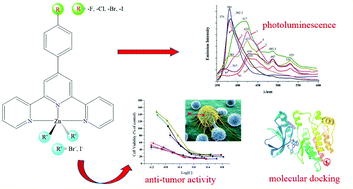
Dalton Trans., 2019,48, 10488-10504
https://doi.org/10.1039/C8DT04924F
Novel latonduine derived proligands and their copper(II) complexes show cytotoxicity in the nanomolar range in human colon adenocarcinoma cells and in vitro cancer selectivity
The copper(II) complexes with latonduine derivatives are superior to those with isomeric paullone modified ligands.

Dalton Trans., 2019,48, 10464-10478
https://doi.org/10.1039/C9DT01238A
Synthesis and photophysical properties of novel pyrene–metalloporphyrin dendritic systems
Energy transfer studies were performed on a series of new pyrene–metalloporphyrin (Zn, Cu, Mg and Mn) dendritic constructs.
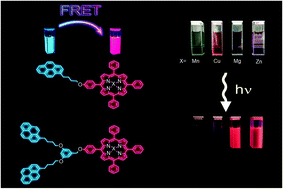
Dalton Trans., 2019,48, 10435-10447
https://doi.org/10.1039/C9DT00855A
Barium complexes with crown-ether-functionalised amidinate and iminoanilide ligands for the hydrophosphination of vinylarenes
Two barium-amide complexes bearing crown-ether-functionalised amidinate and iminoanilide ligands that act as competent precatalysts for the intermolecular hydrophosphination of vinylarenes are presented.
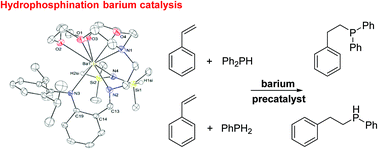
Dalton Trans., 2019,48, 9173-9180
https://doi.org/10.1039/C9DT01512D
Chirality transfer between hexaazamacrocycles in heterodinuclear rare earth complexes
Within heterodinuclear Ln(III) complexes, the chirality of the diaminocyclohexane fragment dictates the helicity of the chiral hexaazamacrocycle which is in turn transferred into the helicity of the achiral hexaazamacrocyle.
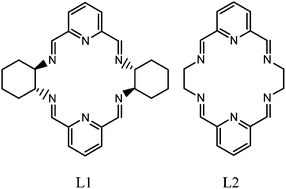
Dalton Trans., 2019,48, 8717-8724
https://doi.org/10.1039/C9DT01318K
endo- versus exo-Cyclic coordination in copper complexes with methylthiazolylcarboxylate tacn derivatives
We explore the impact of methylthiazolylcarboxylate pendant arms on the endo-or exo-cyclic coordination of Cu(II) with tacn derivatives.
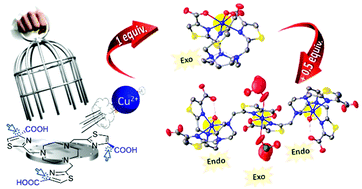
Dalton Trans., 2019,48, 8740-8755
https://doi.org/10.1039/C9DT01366K
New ternary iron(III) aminobisphenolate hydroxyquinoline complexes as potential therapeutic agents
Fe(III)-Aminobisphenolate hydroxyquinoline complexes are active anticancer drug candidates in the low micromolar range, displaying apoptosis as the mode of cell death.
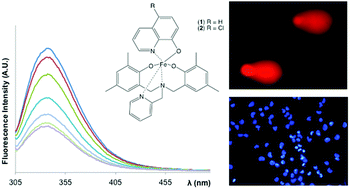
Dalton Trans., 2019,48, 8702-8716
https://doi.org/10.1039/C9DT01193E
Synthesis and structural characterization of homochiral coordination polymers with imidazole-based monocarboxylate ligands
Two-dimensional homochiral coordination polymers of sodium, silver, copper and zinc were obtained with 2alkyl,2-(1H-imidazol-1-yl)acetate anions as bridging ligands.

Dalton Trans., 2019,48, 8731-8739
https://doi.org/10.1039/C9DT01237K
Self-complementary and narcissistic self-sorting of bis-acridinium tweezers
A 1 : 1 mixture of two self-complementary tweezers incorporating different spacers led to a narcissistic self-sorting process under thermodynamic control.
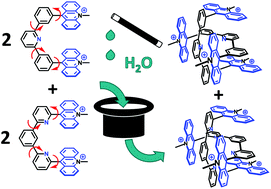
Dalton Trans., 2019,48, 8725-8730
https://doi.org/10.1039/C9DT01465A
Assembly structures and electronic properties of truxene–porphyrin compounds studied by STM/STS
Long-ranged lamellar assembly structures and metalation-related electronic properties of truxene–porphyrin compounds were studied by the STM/STS technique.

Dalton Trans., 2019,48, 8693-8701
https://doi.org/10.1039/C9DT01078E
rtl-M-MOFs (M = Cu, Zn) with a T-shaped bifunctional pyrazole-isophthalate ligand showing flexibility and S-shaped Type F-IV sorption isotherms with high saturation uptakes for M = Cu
The flexible, activated MOF rtl-[Cu(HIsa-az-dmpz)] undergoes a reversible phase change into a closed form with gate opening at cryogenic temperatures for N2 and CO2.
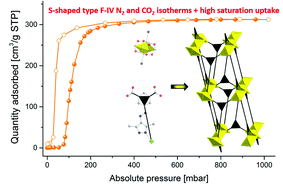
Dalton Trans., 2019,48, 8057-8067
https://doi.org/10.1039/C9DT01499C
Mono- and bimetallic amidinate samarium complexes – synthesis, structure, and hydroamination catalysis
Two similar amidinate samarium catalysts were synthesized in order to investigate the difference between a monometallic and a bimetallic system in the catalytic hydroamination cyclization reaction.

Dalton Trans., 2019,48, 8153-8160
https://doi.org/10.1039/C9DT01418G
A new, simple, and efficient strategy for the preparation of active antifungal biodegradable materials via ring-opening polymerization of L-lactide with zinc aryloxides
Zinc aryloxides supported by phenylphenolato ligands were used for the development of active antifungal biodegradable materials via ring-opening polymerization of L-lactide.
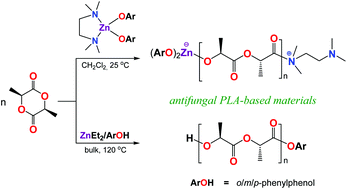
Dalton Trans., 2019,48, 8193-8208
https://doi.org/10.1039/C9DT00627C
gem-Dimethyl-substituted bis(imino)dihydroquinolines as thermally stable supports for highly active cobalt catalysts that produce linear PE waxes
Linear polyethylene waxes with vinyl content can be generated using the depicted N,N,N′-Co catalyst at an industrially relevant operating temperature of 70 °C.
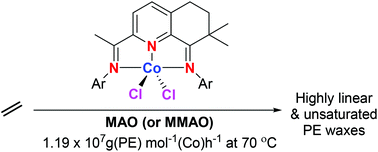
Dalton Trans., 2019,48, 8175-8185
https://doi.org/10.1039/C9DT01345H
Synthesis, structures and luminescence of multinuclear silver(I) pyrazolate adducts with 1,10-phenanthroline derivatives
Silver(I) pyrazolate adducts with phenanthroline, neocuproine and bathocuproine exhibit phosphorescence in the solid state. Their photophysical behavior was interpreted using TD-DFT calculations.
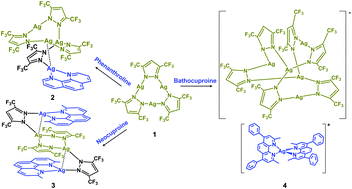
Dalton Trans., 2019,48, 8410-8417
https://doi.org/10.1039/C9DT01355E
Alternative (κ1-N:η6-arene vs. κ2-N,N) coordination of a sterically demanding amidinate ligand: are size and electronic structure of the Ln ion decisive factors?
Both ion size and electronic structure of Ln(II/III) ion are decisive in the implementation of either κ1-amido : η6-arene or κ2-N,N′ type of coordination of sterically demanding amidinate ligands.
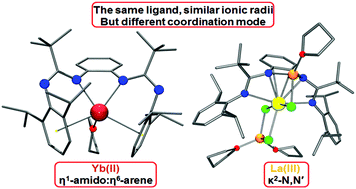
Dalton Trans., 2019,48, 8317-8326
https://doi.org/10.1039/C9DT01162E
Molybdenum(II) complexes with p-substituted BIAN ligands: synthesis, characterization, biological activity and computational study
These complexes crystallize as the less common axial isomer and reach EC50 < 1.8 μM against HeLa cell lines.
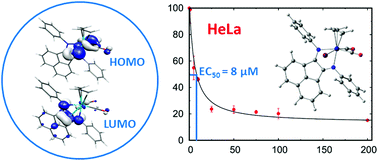
Dalton Trans., 2019,48, 8449-8463
https://doi.org/10.1039/C9DT00469F
Copper-phthalocyanine coordination polymer as a reusable catechol oxidase biomimetic catalyst
We report the synthesis, characterization and catalytic activity of a new phthalocyanine coordination polymer (Cu4CuPcSPy).
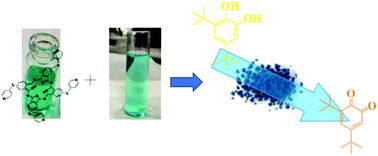
Dalton Trans., 2019,48, 8144-8152
https://doi.org/10.1039/C9DT00378A
Stereoisomers and functional groups in oxidorhenium(V) complexes: effects on catalytic activity
Stereo-control and effects on the catalytic activity of oxidorhenium(V) complexes in epoxidation and perchlorate reduction catalysis.

Dalton Trans., 2019,48, 8106-8115
https://doi.org/10.1039/C9DT01352K
Potassium complexes containing bidentate pyrrole ligands: synthesis, structures, and catalytic activity for the cyclotrimerization of isocyanates
Potassium complexes containing 2-(t-butyliminomethyl)pyrrole and 2-(t-butylaminomethyl)pyrrole revealed intriguing bonding modes, respectively, which proved to be an effective class of catalysts for cyclotrimerization of isocyanate under mild conditions.
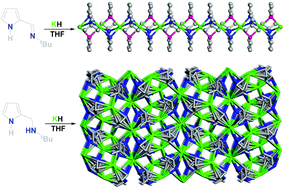
Dalton Trans., 2019,48, 8116-8121
https://doi.org/10.1039/C9DT01246J
Hydrophobicity may enhance membrane affinity and anti-cancer effects of Schiff base vanadium(V) catecholate complexes
Hydrophobicity may increase the hydrolytic stability of vanadium(V) catecholate complexes enabling rapid cellular uptake of the intact complex exhibiting potent anti-cancer activity.
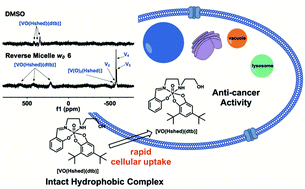
Dalton Trans., 2019,48, 6383-6395
https://doi.org/10.1039/C9DT00601J
Pentamethylcyclopentadienyl ruthenium “pogo stick” complexes with nitrogen donor ligands
The preparation and reactivity of an imidazolin-2-iminato ruthenium complex with a rare one-legged piano-stool (“pogo stick”) geometry is reported.
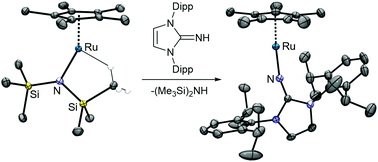
Dalton Trans., 2019,48, 4228-4238
https://doi.org/10.1039/C9DT00577C
Directing self-assembly in solution towards improved cooperativity in Fe(III) complexes with amphiphilic tridentate ligands
Particles with different sizes promote spin crossover at 220 K and a 10 K hysteresis.
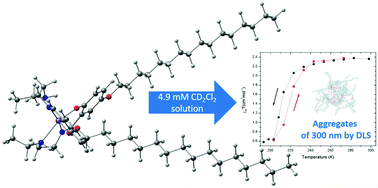
Dalton Trans., 2019,48, 4239-4247
https://doi.org/10.1039/C9DT00032A
Plastomeric-like polyethylenes achievable using thermally robust N,N′-nickel catalysts appended with electron withdrawing difluorobenzhydryl and nitro groups
High molecular weight plastomeric polyethylene can be generated using the title N,N′ nickel(II) halide precatalysts activated with either MAO or EASC; notably these catalysts operate effectively at an industrially relevant 80 °C.
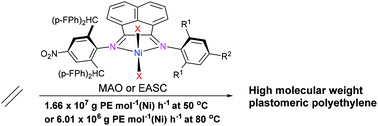
Dalton Trans., 2019,48, 1878-1891
https://doi.org/10.1039/C8DT04427A
About this collection
This themed collection guest-edited by Armando Pombeiro, is centred on the various roles of nitrogen ligands in modern chemistry, and pays tribute to the 150th anniversary of the development of the periodic table. This collection of over 40 reports, demonstrates the versatility of nitrogen ligands and their complexes across a range of chemical specialisms. As evidenced by the number and diversity of the contributions to this collection, nitrogen ligand chemistry continues to gather great interest and there is vast and exciting scope for the future use of nitrogen ligands across a wide diversity of fields.